Global Controls


These panels stay consistent across Play/Edit/Mix views, hence the name "global".
The hardware panel
The hardware panel contains hardware inputs on the left and hardware outputs on the right. Here, you can see all the sensors or analog inputs (like vocal mics) you have connected, as well as your stereo output mixes. You can open and close this panel by clicking the arrow on the top-right of the panel, selecting "Show/hide hardware IO" from the "View" menu, or using the ⎇ + ⌘ + I shortcut.
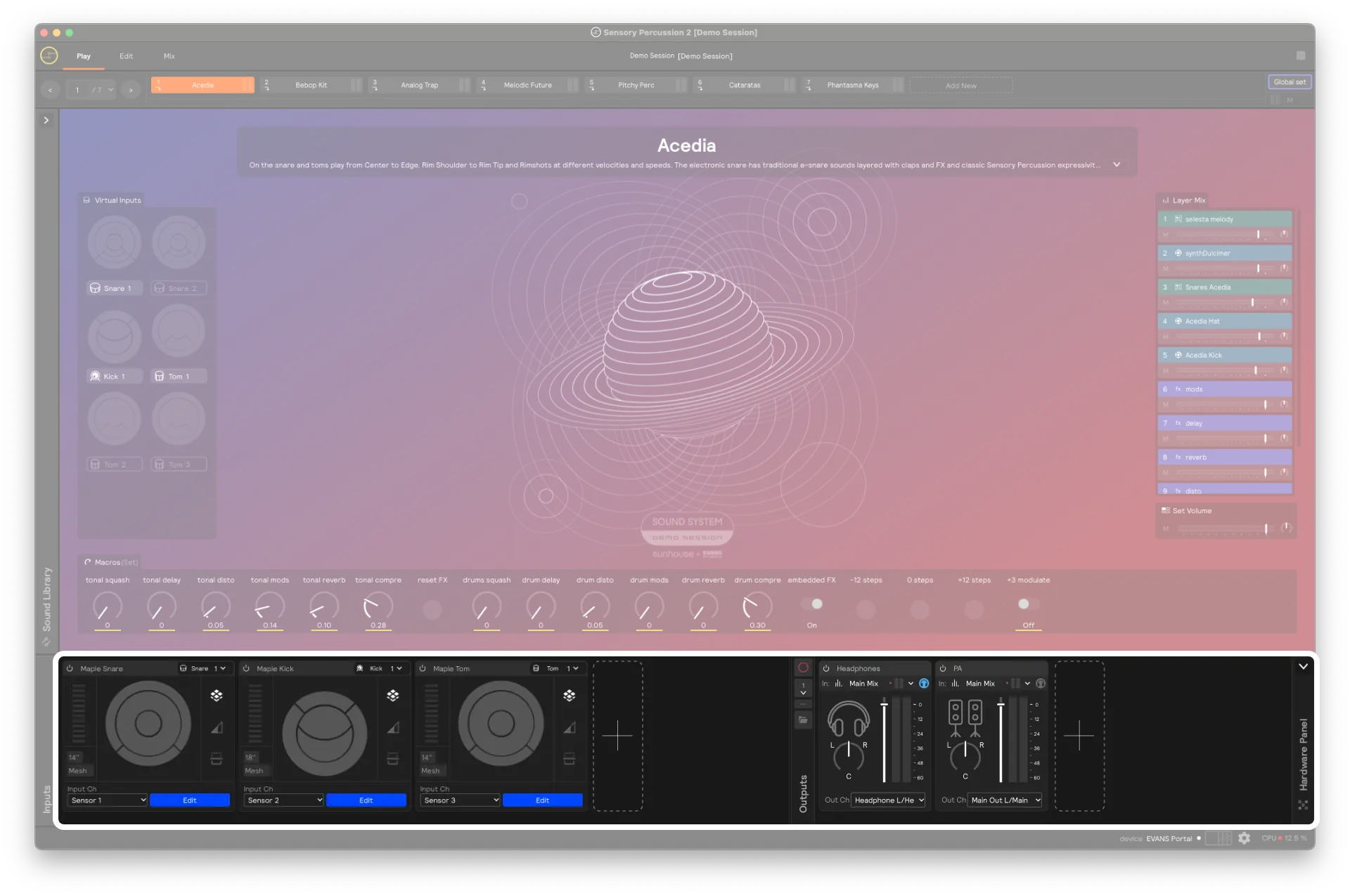
The library panel
The library panel is where you can access saved sessions, Sunhouse library sets and samples, or building blocks for making your own sets like modules and effects. You can open the library by selecting "Show/hide library panel" from the "View" menu, or by using the ⎇ + ⌘ + L shortcut.
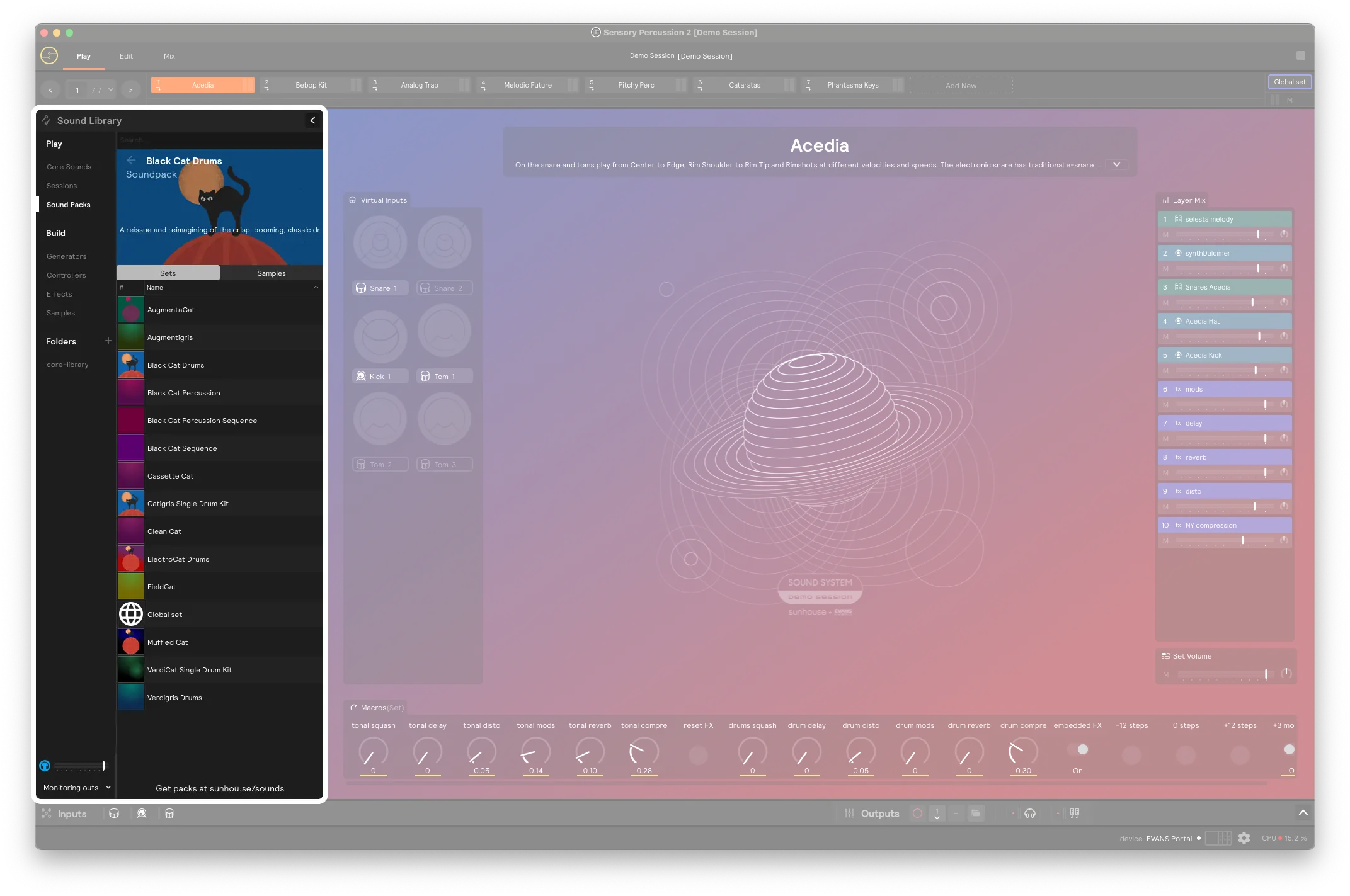
Switching between Play and Edit view does not affect the Library and Hardware Inputs panels, meaning you can always have any combination of these two panels open or closed in either view:
Set Manager
The set manager bar is at the top of the software in every view. It shows all of the sets that you currently have open. All of these sets together comprise your session. The left/right arrow on the left go to the previous/next set, and can be controlled via an assignment.
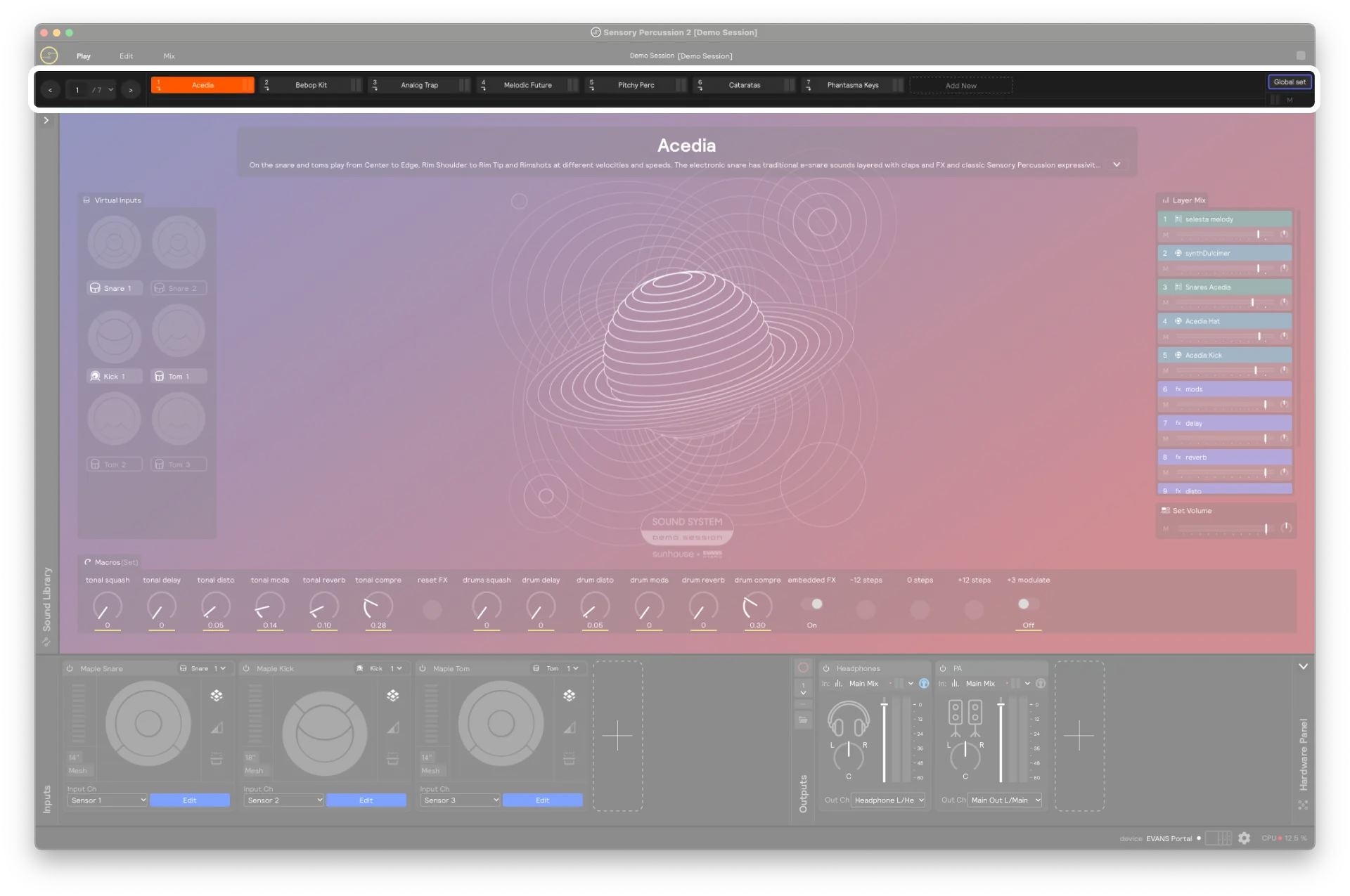
The set manager also has a vertical dropdown view, which you can access by clicking the three dots on the far right of the set manager bar. This dropdown is handy for when you have more sets in your sessions than you can see at one time in the horizontal bar. It also has volume meters next to each set so you can see which set is currently outputting audio.
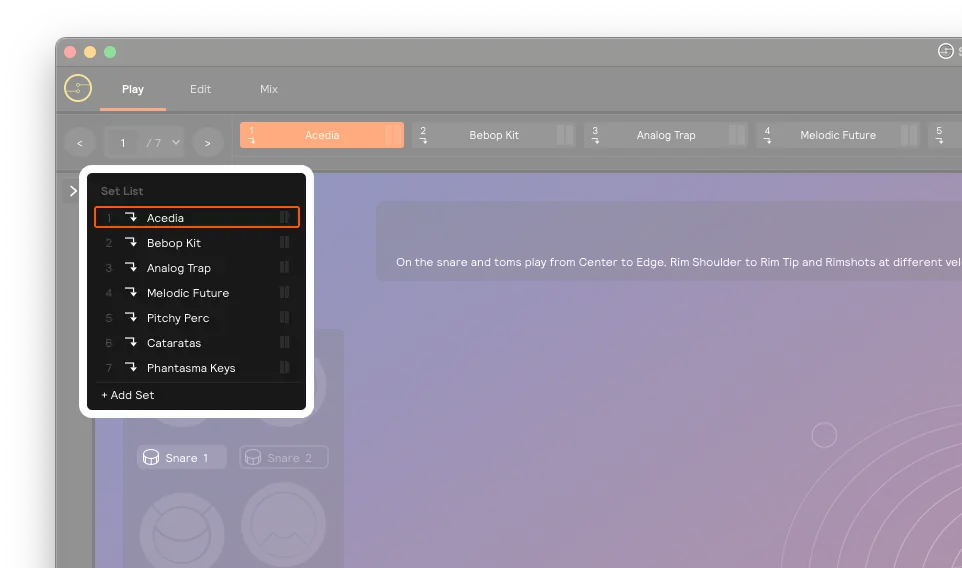
Set Cutoff Modes
By default each set's cutoff mode is set to Nothing Plays Thru, which means that when you transition to the next set, all sounds produced by the original set will immediately be choked.
If you right-click on the set in the set manager, you can change its cutoff mode to either Samples & Effects Play Thru, or Effects Only Play Thru.
In Effect Only Play Thru mode, if you have an effect with a "tail" (like a reverb or delay) active anywhere in the set, then those effects will continue to ring out into the next set.
In Samples & Effects Play Thru mode, samplers will also continue playing into the next set. Usually, this means that the tail of a playing sample will be allowed to ring out and eventually terminate as you switch to the next set. However, if you have an infinitely looping sampler, it will continue looping indefinitely within the next set.
Both of these Play Thru modes will only store playing audio for a few set transitions. This means, for example, if you have an indefinitely looping sampler triggered in a set that is in Samples & Effects Play Thru mode, it will continue looping as you switch to the next two sets. However, it will stop looping after you transition to the third set. If you need a sample to loop indefinitely as you change sets many times throughout your session, consider using the Global Set, which is designed for this -- and similar -- kinds of actions.
Global Stop
If you want to immediately stop all sound being produced by your Sensory Percussion sets, you can click the Global Stop button. This button sends a stop messages to all modules in all sets. It is an assignable parameter, as well, simply-right-click it and add an assignment to choke all sounds with a MIDI device, or one of the zones of your drum.
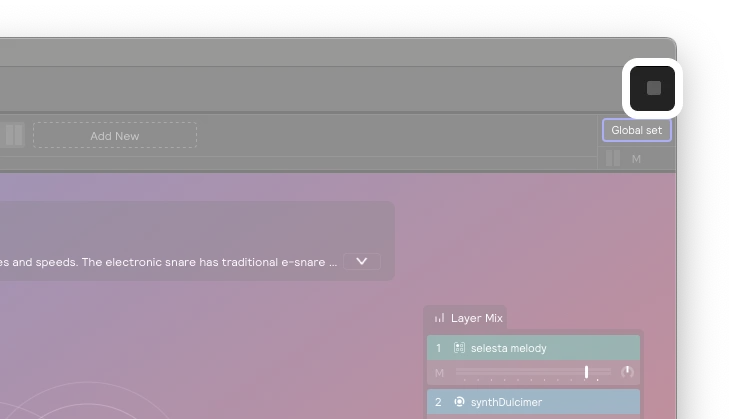
The global stop button stops all sound currently playing in the active set and global set, but it won't stop modules like metros or LFOs that might be running and could trigger new sounds.